 |
| April 13, 2021 | Volume 17 Issue 14 |
Electrical/Electronic News & Products
Designfax weekly eMagazine
Archives
Partners
Manufacturing Center
Product Spotlight
Modern Applications News
Metalworking Ideas For
Today's Job Shops
Tooling and Production
Strategies for large
metalworking plants
Board-level EMI shielding: DIY in minutes
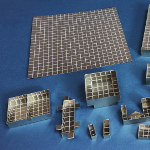 ProtoShield sheets from Tech-Etch are depth-etched with a checkerboard pattern for folding, so they can be easily formed into many diverse configurations. In the product-development stage, fully functional shields can be created in minutes with just a pair of scissors and a straight edge for folding. Offered in two sizes: standard (.25-in. squares) and metric (5-mm squares). Both versions are solderable and corrosion resistant due to nickel silver material. Shield prototypes can be directly soldered to the board, or shield clips can be used for easy mounting. Samples available.
ProtoShield sheets from Tech-Etch are depth-etched with a checkerboard pattern for folding, so they can be easily formed into many diverse configurations. In the product-development stage, fully functional shields can be created in minutes with just a pair of scissors and a straight edge for folding. Offered in two sizes: standard (.25-in. squares) and metric (5-mm squares). Both versions are solderable and corrosion resistant due to nickel silver material. Shield prototypes can be directly soldered to the board, or shield clips can be used for easy mounting. Samples available.
Learn more.
Isolated probing tech for fast-switching power device testing
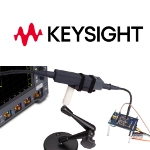 Keysight Technologies has developed an optically isolated differential probing family dedicated to enhancing efficiency and performance testing of fast-switching devices such as wide-bandgap GaN and SiC semiconductors. Validation of floating half-bridge and full-bridge architectures commonly used in power conversion, motor drives, and inverters requires measurement of small differential signals riding on high common-mode voltages. This measurement can be challenging due to voltage source fluctuations relative to ground, noise interference, and safety concerns.
Keysight Technologies has developed an optically isolated differential probing family dedicated to enhancing efficiency and performance testing of fast-switching devices such as wide-bandgap GaN and SiC semiconductors. Validation of floating half-bridge and full-bridge architectures commonly used in power conversion, motor drives, and inverters requires measurement of small differential signals riding on high common-mode voltages. This measurement can be challenging due to voltage source fluctuations relative to ground, noise interference, and safety concerns.
Learn more.
Protect sensitive electronics in explosive environments with new aluminum ATEX Cabinet Cooler Systems
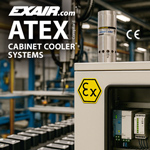 EXAIR's ATEX Cabinet Cooler® Systems deliver a powerful and affordable solution for keeping electrical enclosures cool in hazardous ATEX classified areas -- and they're now available in durable aluminum construction. Engineered for use in Zones 2 and 22, these coolers are UL tested, CE compliant, and meet stringent ATEX standards for purged and pressurized enclosures. With cooling capacities up to 5,600 Btu/Hr., ATEX Cabinet Coolers are ideal for preventing overheating in electrical cabinets. EXAIR offers a comprehensive lineup of systems.
EXAIR's ATEX Cabinet Cooler® Systems deliver a powerful and affordable solution for keeping electrical enclosures cool in hazardous ATEX classified areas -- and they're now available in durable aluminum construction. Engineered for use in Zones 2 and 22, these coolers are UL tested, CE compliant, and meet stringent ATEX standards for purged and pressurized enclosures. With cooling capacities up to 5,600 Btu/Hr., ATEX Cabinet Coolers are ideal for preventing overheating in electrical cabinets. EXAIR offers a comprehensive lineup of systems.
Learn more.
PLC handbook chock full of must-know information
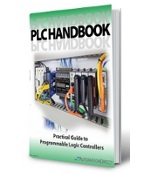 Automation-Direct's Practical Guide to Program-mable Logic Controllers Handbook has been improved with tons of new need-to-know info, making it a more comprehensive guide to the world of PLCs. Besides covering the basics of PLC history, PLC hardware, and PLC software, this guide takes you deeper into the ever-changing world of PLC communication, the importance of feedback loops, cyber security, and many other areas that are a must-know for any PLC novice or seasoned automation professional.
Automation-Direct's Practical Guide to Program-mable Logic Controllers Handbook has been improved with tons of new need-to-know info, making it a more comprehensive guide to the world of PLCs. Besides covering the basics of PLC history, PLC hardware, and PLC software, this guide takes you deeper into the ever-changing world of PLC communication, the importance of feedback loops, cyber security, and many other areas that are a must-know for any PLC novice or seasoned automation professional.
Get this great resource today.
Haptic feedback prototyping kit from TDK
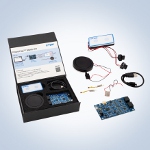 Get your customers to feel the difference your products make. TDK has released a development starter kit for fast haptics prototyping. It gives mechanical designers and engineers first impressions of the haptic feedback using PowerHap piezo actuators, shows how the mechanical integration works, and provides a reference design. Applications include automotive, displays and tablets, household appliances, vending machines, game controllers, industrial equipment, and medical devices.
Get your customers to feel the difference your products make. TDK has released a development starter kit for fast haptics prototyping. It gives mechanical designers and engineers first impressions of the haptic feedback using PowerHap piezo actuators, shows how the mechanical integration works, and provides a reference design. Applications include automotive, displays and tablets, household appliances, vending machines, game controllers, industrial equipment, and medical devices.
Learn more.
Mini ESD preset torque screwdriver
 Need precision fastening with ESD protection at the smallest torque levels? Mountz has you covered. The new FG Mini ESD Preset Torque Screwdriver is built for low-torque, high-precision tasks. Its compact design makes it ideal for tight spaces and small fasteners, while delivering the same reliable control and ESD protection users have come to expect from Mountz. Two models available: FG25z (3 to 25 ozf.in, 2 to 17.7 cN-m) and FG50z (20 to 50 ozf.in, 14.1 to 35.3 cN-m).
Need precision fastening with ESD protection at the smallest torque levels? Mountz has you covered. The new FG Mini ESD Preset Torque Screwdriver is built for low-torque, high-precision tasks. Its compact design makes it ideal for tight spaces and small fasteners, while delivering the same reliable control and ESD protection users have come to expect from Mountz. Two models available: FG25z (3 to 25 ozf.in, 2 to 17.7 cN-m) and FG50z (20 to 50 ozf.in, 14.1 to 35.3 cN-m).
Learn more.
Laumas load cells and electronics from AutomationDirect
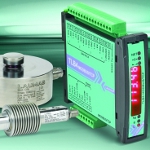 Automation-Direct has added Laumas precision-engineered load cells, transmitters, and accessories that deliver reliable performance in industrial weighing and force measurement applications. The FCAL series high-precision bending beam load cells are ideal for low- to mid-capacity systems. CTL series load cells are designed for both tension and compression, with excellent linearity. The CBL series low-profile compression load cells are perfect for space-limited applications. Laumas load cell transmitters are available too for precise monitoring and control. Very good pricing.
Automation-Direct has added Laumas precision-engineered load cells, transmitters, and accessories that deliver reliable performance in industrial weighing and force measurement applications. The FCAL series high-precision bending beam load cells are ideal for low- to mid-capacity systems. CTL series load cells are designed for both tension and compression, with excellent linearity. The CBL series low-profile compression load cells are perfect for space-limited applications. Laumas load cell transmitters are available too for precise monitoring and control. Very good pricing.
Learn more.
Engineer's Toolbox: What is ground loop feedback?
 Improper grounding can create problems in data logging, data acquisition, and measurement and control systems. One of the most common problems is known as ground loop feedback. Experts at CAS DataLoggers run through five ways to eliminate this problem.
Improper grounding can create problems in data logging, data acquisition, and measurement and control systems. One of the most common problems is known as ground loop feedback. Experts at CAS DataLoggers run through five ways to eliminate this problem.
Read the full article.
What is a braking resistor?
 According to Automation-Direct, "Braking resistors don't actually provide braking directly -- rather, they allow a drive to stop a loaded motor faster." Why is this important? Protect your AC or DC drive system from regenerative voltage that can create an over-voltage fault on the drive -- especially with high inertial loads or rapid deceleration.
According to Automation-Direct, "Braking resistors don't actually provide braking directly -- rather, they allow a drive to stop a loaded motor faster." Why is this important? Protect your AC or DC drive system from regenerative voltage that can create an over-voltage fault on the drive -- especially with high inertial loads or rapid deceleration.
View the video.
New Digital Static Meter: Precise measurement, easy use
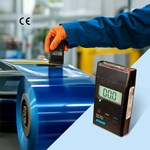 Static electricity isn't just a nuisance; it's a serious threat to manufacturing efficiency, product integrity, and workplace safety. Unchecked static can lead to costly downtime, product defects, material jams, and even hazardous shocks to employees. If static is interfering with your processes, EXAIR's upgraded Model 7905 Digital Static Meter offers an essential first step in identifying and eliminating the problem. With just the press of a button, this easy-to-use, handheld device pinpoints the highest voltage areas in your facility, helping you diagnose static issues before they become a problem.
Static electricity isn't just a nuisance; it's a serious threat to manufacturing efficiency, product integrity, and workplace safety. Unchecked static can lead to costly downtime, product defects, material jams, and even hazardous shocks to employees. If static is interfering with your processes, EXAIR's upgraded Model 7905 Digital Static Meter offers an essential first step in identifying and eliminating the problem. With just the press of a button, this easy-to-use, handheld device pinpoints the highest voltage areas in your facility, helping you diagnose static issues before they become a problem.
Learn more.
New laser cutting modulating strategy tested with Mikrotron high-speed camera
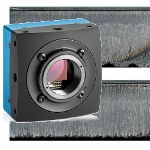 Modulating a laser beam's intensity distribution optimizes energy delivery to the process zone, resulting in better cutting speed, cut edge quality, and cut kerf geometry. Scientists in Belgium have come up with a new method that they say produces better cutting results.
Modulating a laser beam's intensity distribution optimizes energy delivery to the process zone, resulting in better cutting speed, cut edge quality, and cut kerf geometry. Scientists in Belgium have come up with a new method that they say produces better cutting results.
Read the full article.
All-in-one embedded PLC based on Raspberry Pi 4 -- build control applications
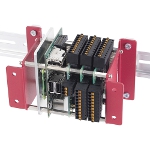 The new PLC CPI-PS10CM4 from Contec Co. is a compact embedded programmable logic controller (PLC) that is loaded with CODESYS, the world's most widely used software PLC. This product uses Contec's original single-board computer, which is based on Raspberry Pi's latest embedded module, the Compute Module 4 (CM4). By using the wide range of peripheral devices for Raspberry Pi, such as Contec's CPI Series, you can build various control applications in a PLC language that complies with the IEC 61131-3 international standard.
The new PLC CPI-PS10CM4 from Contec Co. is a compact embedded programmable logic controller (PLC) that is loaded with CODESYS, the world's most widely used software PLC. This product uses Contec's original single-board computer, which is based on Raspberry Pi's latest embedded module, the Compute Module 4 (CM4). By using the wide range of peripheral devices for Raspberry Pi, such as Contec's CPI Series, you can build various control applications in a PLC language that complies with the IEC 61131-3 international standard.
Learn more.
Torque sensors for fastening applications and more
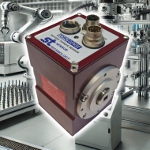 Saelig Company has introduced the Sensor Technology SGR525/526 Series Torque Sensors to provide precision torque monitoring that is critical for performance and safety. The square drive design (for applications with non-cylindrical shafts) allows for seamless integration into power tools, test rigs, industrial machinery, and precision fastening applications, ensuring superior torque measurement without the need for additional adapters or modifications. The SGR525 offers torque measurement only, while the SGR526 provides torque, speed, and power measurement using a 360-pulse-per-revolution encoder. Industries include automotive, aerospace, manufacturing, and research and development.
Saelig Company has introduced the Sensor Technology SGR525/526 Series Torque Sensors to provide precision torque monitoring that is critical for performance and safety. The square drive design (for applications with non-cylindrical shafts) allows for seamless integration into power tools, test rigs, industrial machinery, and precision fastening applications, ensuring superior torque measurement without the need for additional adapters or modifications. The SGR525 offers torque measurement only, while the SGR526 provides torque, speed, and power measurement using a 360-pulse-per-revolution encoder. Industries include automotive, aerospace, manufacturing, and research and development.
Learn more.
Wide-angle camera optimized for larger, faster conveyor belts
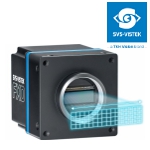 Wider conveyor belts operating at higher speeds are now commonplace in modern logistics. To keep up, SVS-Vistek is offering a cost-effective alternative to multi-camera systems with its fxo901CXGE 10-GigE color camera featuring the Sony IMX901-AQR wide-aspect global shutter 16.4-megapixel CMOS sensor. Unlike standard cameras, this unit captures targets in a wide field of view while maintaining high resolutions. The 4:1 horizontal aspect ratio allows one fxo901CXGE to replace an entire multi-camera system, removing the need for image synchronization.
Wider conveyor belts operating at higher speeds are now commonplace in modern logistics. To keep up, SVS-Vistek is offering a cost-effective alternative to multi-camera systems with its fxo901CXGE 10-GigE color camera featuring the Sony IMX901-AQR wide-aspect global shutter 16.4-megapixel CMOS sensor. Unlike standard cameras, this unit captures targets in a wide field of view while maintaining high resolutions. The 4:1 horizontal aspect ratio allows one fxo901CXGE to replace an entire multi-camera system, removing the need for image synchronization.
Learn more.
Handheld thermal imager cuts diagnostic time
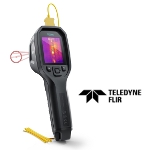 The FLIR TG268 is a next-generation thermal imager that provides professionals in the utility, manufacturing, electrical, automotive, and industrial sectors with a lightweight, handheld, affordable condition monitoring tool. Latest enhancements include higher temperature ranges, improved resolution, and larger data storage capacity. Go beyond the restrictions of single-spot IR thermometers to view and evaluate hot and cold spots that may signify potentially dangerous issues. Accurately measure temps from -25 to 400 C. Native thermal images improved with Super Resolution upscaling.
The FLIR TG268 is a next-generation thermal imager that provides professionals in the utility, manufacturing, electrical, automotive, and industrial sectors with a lightweight, handheld, affordable condition monitoring tool. Latest enhancements include higher temperature ranges, improved resolution, and larger data storage capacity. Go beyond the restrictions of single-spot IR thermometers to view and evaluate hot and cold spots that may signify potentially dangerous issues. Accurately measure temps from -25 to 400 C. Native thermal images improved with Super Resolution upscaling.
Learn more.
Is it worth investing in solar PV with batteries at home?
Researchers looked into some of the issues that hamper the uptake of solar energy and proposed different policies to encourage the use of this technology.
Installing solar panels to offset energy costs and reduce the environmental impact of their homes has been gaining popularity with homeowners in recent years. On a global scale, more and more countries are encouraging the installation of solar photovoltaics (PV) at residential buildings to increase the share of renewable energy in their energy mix and enhance energy security. Despite the promising advantages this mode of electricity generation offers, there are still a number of challenges that need to be overcome.
Batteries to store excess electricity
Solar PV electricity generation peaks during the day when electricity demand is low, resulting in overproduction -- especially on weekdays when people are usually not at home. Currently, this excess electricity supply is typically exported to the central electricity grid, but ideally, homes that have solar panels should be able to store overproduction of solar electricity using batteries and consume it in the evening when demand is high and there is no solar electricity generation.
The problem is that the investment cost for batteries is currently quite high, which makes it economically unprofitable for consumers to pair their solar PV with a battery. In their new study published in the journal Applied Energy, researchers from the International Institute for Applied Systems Analysis (IIASA), University College London (UK), and Aalto University (Finland) looked into this challenge and proposed different policies to encourage residential electricity consumers to pair solar PV with battery energy storage.
"We wanted to determine whether investing in residential solar PV combined with battery energy storage could be profitable under current market conditions for residential consumers and what kind of support policies can be used to enhance the profitability of stand-alone batteries or PV-battery systems. On top if this, we also wanted to compare the system (or regulatory) cost of each PV-battery policy to the benefit of that particular policy for residential consumers who invest in these technologies," says lead author Behnam Zakeri, a researcher with the IIASA Energy, Climate, and Environment Program.
Benefits of using battery storage
The study shows that without a battery, homeowners only use 30 to 40% of the electricity from their solar PV panels, while the rest of the electricity is exported to the grid with very little to no benefit for the owner. With a home battery, the self-consumption of solar PV in the building almost doubles, allowing the residents to reduce electricity imports from the grid by up to 84%, which can, in turn, help the owner to become less dependent on the grid and electricity prices.
In addition, the researchers found that while PV-batteries are presently not really profitable for residential consumers, they can become so with the implementation of slightly different policies and regulations, even in high-latitude countries where solar irradiation is relatively low.
Energy policies for a decentralized energy system
The authors propose some novel energy storage polices that offer a positive return on investment between 40 and 70% for residential PV-battery storage, depending on the policy. These include, among others, that national renewable energy policies adopt more innovative incentives to enhance the economic profitability of decentralized green energy solutions based on the contribution of these systems to the grid. The results indicate that this can be easily achieved by, for example, rewarding consumers for using their solar PV generation onsite, instead of encouraging them to export the excess solar energy they produce to the grid.
The researchers further posit that the way utility companies and electricity distribution firms generate income today may itself be a hindrance to promoting the self-consumption of renewable energy in buildings, as these companies generally charge consumers for each unit of electricity imported from the grid. If consumers become independent from the grid, grid operators and utility companies would lose a significant part of their income. Such a scenario calls for new business models and operating modes to guarantee that central utilities do not see decentralized solutions as a threat to their revenues.
In today's renewable electricity-generation environment, capital subsidies are one option to partly pay for investment in batteries. The study points out that these policies are costly for the system, and may not automatically result in system-level benefits as they do not reward the optimal use of batteries. In this regard, Zakeri and his colleagues propose a "storage policy" that rewards residential battery owners to store and discharge electricity whenever the system needs it. The profitability of PV-battery systems also depends on the type of retail pricing mechanism in the system.
The findings indicate that dynamic electricity pricing at the consumer side, such as hourly electricity prices with an enhanced gap between off-peak and peak prices, will encourage consumers to use home batteries to benefit from charging at low-price hours and discharging the battery when the electricity price is high. This way of operating a home battery could help reduce the pressure on the electricity grid at peak times, which has significant benefits for the system.
"Traditional, central energy structures are transitioning to new systems based on decentralized, renewable energy solutions. This requires more flexible, modern, and effective policies that can guarantee the social and economic benefits of the energy transition. We hope our analysis contributes to a better understanding of the role of some energy policies that can promote decentralized energy solutions," Zakeri says.
Reference
Zakeri, B., Cross, S., Dodds, P., Castagneto Gissey, G. (2021). Policy options for enhancing economic profitability of residential solar photovoltaic with battery energy storage. Applied Energy DOI: 10.1016/j.apenergy.2021.116697
Source: International Institute for Applied Systems Analysis (IIASA)
Published April 2021
Rate this article
View our terms of use and privacy policy
